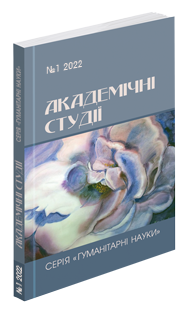Abstract
This paper presents a number of peculiarities connected with typological features of the category of voice (CoV) in the modern Germanic languages, namely German, Swedish, Danish, Frisian, and Icelandic. The problem of interpretation of the CoV lies in its opposition and semantic incompleteness. The diversity of voice forms in the languages of the same language group has been caused by various factors. The ambiguity of the CoV results from its dual syntactic morphological nature. The difficulties connected with specifying the voice constructions in the texts are that grammatical meaning of the construction is semantically close to the lexical meaning of the verb. It is due to the fact that the voice constructions belong to the different language levels, e.g., morphological, syntactic and lexical. Based on these levels the complicated voice constructions, which present subject-object relations, are built. A distinct feature of the category of voice paradigm in the studied languages is its morphological, syntactic, and semantic diversity of analyzed constructions. It is to be noted that the mentioned above modern Germanic languages are of V2-type, where the verb moves to the second position in the sentence provided that the initial one is filled with any other sentence element besides a subject. Symmetry is a convergent feature for the reflexive voice in the Germanic languages. Two subjects used in such type of constructions are communicatively equivalent. Moreover, there are two more common features for the voice constructions. The first one is a classic model AUX+PTCPL II, according to which the languages are built. The second feature is a building of reflexive and reciprocal voices with the obligatory usage of pronouns. Thus, the paper aims at the study of CoV in the modern Germanic languages, specifying its typological features in German, Icelandic, Swedish, and Frisian, and distinguishing divergent and convergent features in the paradigm of the category of voice.
References
Берков В. П. Исландский язык. Москва : Издательство «Астрель», 2001. 336 с.
Жлуктенко Ю. А. А. В. Двухжилов. Фризский язык. Київ : Наукова думка, 1984. 155 с.
Маслова-Лашанська С. С. Шведська мова. URL: https://svspb.net/bok/2-7-d.htm#h42 (дата звернення: 06.09.2021).
Маслова-Лашанская С. С., Толстая Н. Н. Учебник шведского языкa. СПб. : Петро-РИФ, 1996. 272 с.
Полховська М. В. Принципи структурної організації екзистенційного речення ранньоновоанглійської мови. Вісник Київ. лінгвіст. ун-ту. Серія: Філологія. 2008. Київ : Видав. центр КДЛУ. Т. 11, № 2. С. 80–86.
Шапочкіна О. В. Типологія категорії стану германських мов у сучасних граматичних студіях. Молодий вчений. Херсон, 2016. № 10(37). С. 208–211.
Goldberg A. Constructions at work: The nature of generalization in language . Oxford : Oxford Univ. Press, 2006. 234 р.
Slotta Frank. Sprachwissenschaft auf den Punkt gebracht. Ein Skript. WS Köln : Universität zu Köln. 2011. 123 р.

